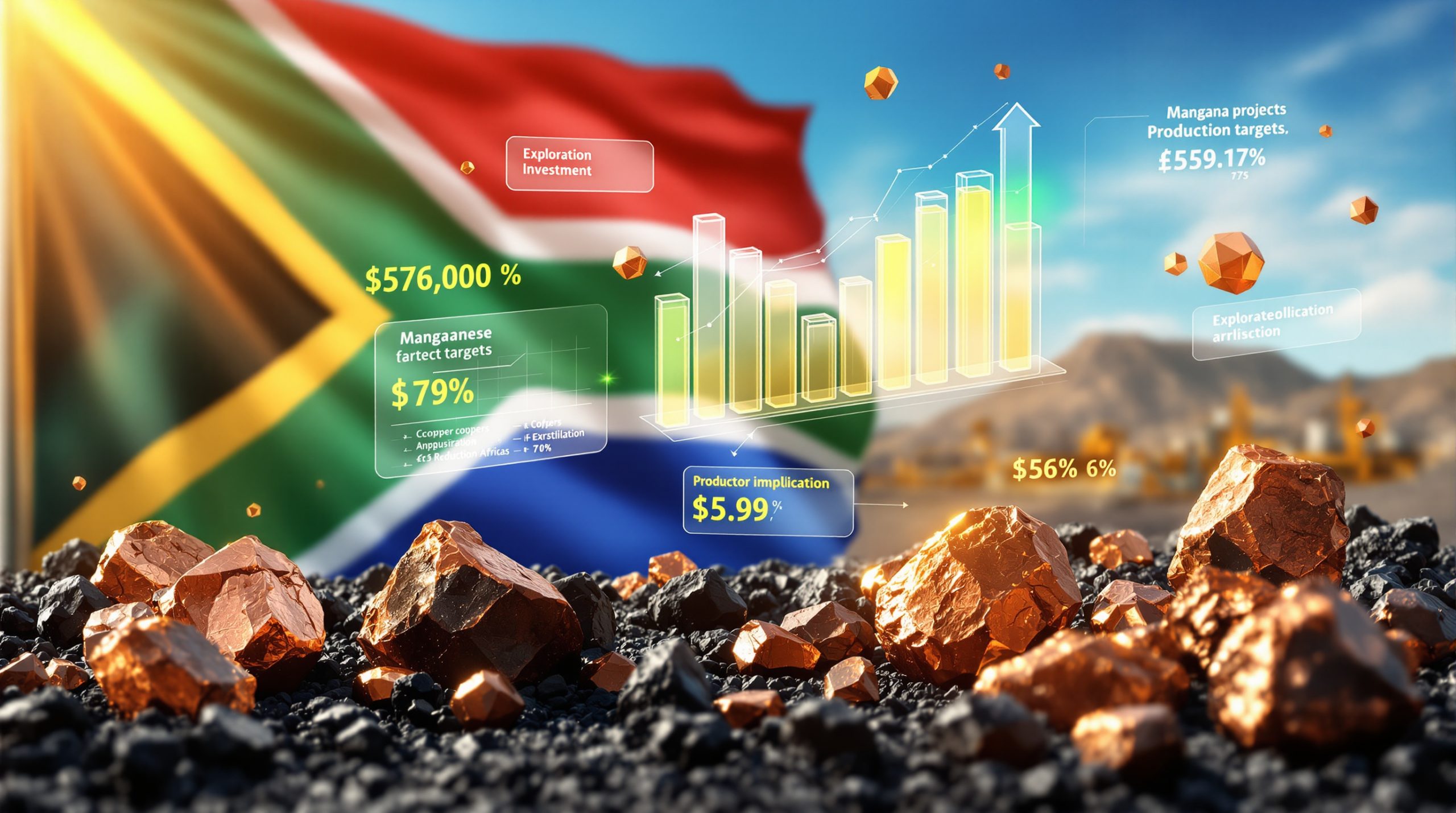How Are DRC's Cobalt Export Restrictions Reshaping Global Supply Chains?
The Democratic Republic of Congo's implementation of cobalt export restrictions has triggered significant disruptions across global supply chains. Beginning with a complete ban in February 2025, the DRC government has now transitioned to a quota-based system starting October 16, 2025. This strategic shift aims to transform the nation's role in the cobalt value chain from primarily exporting raw materials to developing domestic processing capabilities and capturing greater economic value.
The Evolution of DRC's Cobalt Export Policy
The DRC's approach has evolved through distinct phases:
-
Initial Ban Phase (February-October 2025): Complete prohibition on raw and semi-processed cobalt exports
-
Quota System (From October 16, 2025): Controlled exports with specific allocations per producer
-
Long-term Vision: Development of domestic processing infrastructure by 2027
The quota system permits approximately 18,125 tonnes for export during the remainder of 2025, with annual quotas of 96,600 tonnes for both 2026 and 2027—less than half of the country's 2024 production volumes.
Why Has the DRC Implemented These Cobalt Export Restrictions?
The DRC government has outlined several strategic objectives behind these export controls:
Economic Development Goals
-
Value Addition: Encouraging domestic processing of cobalt into higher-value products
-
Employment Creation: Generating skilled jobs in processing and manufacturing sectors
-
Revenue Enhancement: Increasing government income through taxation of processed products
-
Industrial Development: Building processing infrastructure and technical capabilities
Resource Governance Improvements
-
Supply Chain Traceability: Better monitoring of cobalt from mine to market
-
Environmental Compliance: Enforcing stricter environmental standards
-
Formalization of Artisanal Mining: Reducing unregulated extraction activities
-
Tax Compliance: Ensuring proper royalty payments through prepayment requirements
What Impact Are These Restrictions Having on Global Cobalt Prices?
The market response to these export restrictions has been dramatic:
Price Movements Since Restrictions Began
| Period | Price Change | Market Reaction |
|---|---|---|
| Pre-ban (Jan 2025) | Below $10/lb | 21-year low (except brief 2015 dip) |
| Mid-ban (June 2025) | ~$15/lb | 50% increase from pre-ban levels |
| Current (Oct 2025) | ~$20/lb | 100% increase from pre-ban levels |
| Cobalt Hydroxide | 200%+ increase | Tripled in value since restrictions began |
Despite these significant increases, current prices remain less than half of previous market peaks in 2018 and 2022, suggesting potential for further upward movement if supply constraints persist. The global cobalt supply dynamics continue to evolve as these restrictions reshape the market landscape.
Price Sensitivity Analysis
According to Kenny Ives, Chief Commercial Officer at CMOC Group (the world's largest cobalt producer), current price levels are "at the upper end of what people will tolerate without being forced to switch" to alternative technologies. This indicates a delicate balance where further price increases could accelerate technological shifts away from cobalt-dependent chemistries.
How Are Major Cobalt Producers Responding to Export Quotas?
The quota system has created significant challenges for major producers operating in the DRC:
CMOC Group's Strategic Response
-
Production vs. Export Disconnect: Despite being allowed to export only 27% of its 2024 production volume in 2026, CMOC plans to continue expanding production
-
Copper-Driven Economics: The company's decision is influenced by record copper prices, as cobalt is extracted alongside copper
-
Production Growth: CMOC's copper output from Congolese mines will reach 700,000 tonnes in 2025 (8% growth from 2024), with further significant increases planned
-
Stockpiling Implications: Continued production despite export limits suggests substantial cobalt stockpiling within the DRC
Other Major Producers
-
Glencore: Implementing operational adjustments at Mutanda and KCC operations
-
Eurasian Resources Group: Adapting strategies at Metalkol RTR facility
-
Chemaf: Focusing on domestic processing capabilities
The Cobalt Blue expansion project in Australia represents one of the responses to diversify supply outside the DRC amidst these export restrictions.
What Are the Long-Term Implications for Battery Manufacturers?
The restrictions are accelerating strategic shifts among battery manufacturers:
Technology Diversification
-
LFP Adoption: Chinese EV manufacturers have already begun transitioning to lithium iron phosphate (LFP) batteries that don't require cobalt
-
Reduced Cobalt Formulations: Battery makers are developing chemistries with lower cobalt content
-
Alternative Material Research: Increased R&D investment in cobalt-free technologies
Supply Chain Restructuring
-
Vertical Integration: Battery manufacturers pursuing ownership stakes in mining operations
-
Geographic Diversification: Exploring cobalt sources outside the DRC (Australia, Indonesia, Morocco)
-
Recycling Investments: Accelerating development of cobalt recovery from spent batteries
Recent battery recycling innovations are becoming increasingly important as manufacturers seek to reduce dependence on primary cobalt sources.
How Are Global Powers Responding to These Supply Chain Disruptions?
Major economies have implemented strategic responses to the DRC's cobalt export restrictions:
United States Strategic Actions
-
Strategic Stockpiling: Increasing government reserves of cobalt
-
Domestic Processing: Investments in North American refining capabilities
-
Supply Agreements: Securing long-term contracts with allied nations' producers
Chinese Strategic Response
-
Processing Dominance: Leveraging existing control of cobalt refining
-
Investment in Alternatives: Accelerating LFP battery production
-
DRC Relationships: Strengthening diplomatic and economic ties with the DRC
European Union Initiatives
-
Critical Minerals Act: Implementing legislation to secure supply chains
-
Recycling Infrastructure: Developing advanced battery recycling capabilities
-
African Partnerships: Creating bilateral agreements with African mining nations
These responses are aligned with broader energy transition trends that emphasize supply chain resilience for critical minerals.
What Does the Future Hold for Global Cobalt Markets?
The outlook for cobalt markets reflects several competing factors:
Short-Term Market Dynamics (2025-2026)
-
Price Volatility: Continued fluctuations as markets adjust to quota system
-
Supply Constraints: Tight availability of refined cobalt products
-
Stockpile Releases: Strategic reserves potentially moderating price spikes
Medium-Term Trends (2026-2028)
-
DRC Processing Capacity: Growth in domestic value addition
-
Technology Adaptation: Accelerated shift to reduced-cobalt formulations
-
New Supply Sources: Development of projects outside the DRC
Long-Term Market Transformation (Beyond 2028)
-
Circular Economy: Increased recycling reducing primary demand
-
Technology Diversification: Multiple battery chemistries reducing cobalt intensity
-
Market Rebalancing: New equilibrium between supply, demand, and processing capacity
The DRC's approach to mineral beneficiation benefits its economy while creating challenges for global markets.
How Can Stakeholders Navigate This Changing Landscape?
Different stakeholders face unique challenges and opportunities:
Recommendations for Mining Companies
-
Vertical Integration: Invest in processing capabilities
-
Geographic Diversification: Develop assets outside the DRC
-
Technology Partnerships: Collaborate with battery manufacturers on material specifications
Strategies for Battery Manufacturers
-
Supply Security: Establish long-term agreements with multiple suppliers
-
Technology Flexibility: Develop platforms supporting multiple battery chemistries
-
Recycling Integration: Incorporate recycled materials into production
Considerations for Investors
-
Value Chain Analysis: Evaluate exposure across the entire cobalt supply chain
-
Technology Tracking: Monitor battery chemistry developments
-
Policy Awareness: Stay informed about resource nationalism trends
FAQ: Understanding Cobalt Export Restrictions
What percentage of global cobalt comes from the DRC?
The Democratic Republic of Congo accounts for approximately 70-77% of global cobalt production, making it the dominant source of this critical battery metal. This concentration creates significant supply chain vulnerability when export policies change.
How do these restrictions affect electric vehicle production?
Electric vehicle manufacturers face potential battery cost increases and supply chain disruptions. However, the impact varies by manufacturer based on their battery chemistry choices, with those using LFP batteries (cobalt-free) being less affected than those dependent on NMC (nickel-manganese-cobalt) formulations.
Will cobalt prices continue to rise through 2026?
While short-term price increases are likely due to supply constraints, the medium-term outlook is more complex. Accelerated shifts to alternative technologies, development of new supply sources, and potential adjustments to DRC policy could moderate price growth.
Are there viable alternatives to cobalt in batteries?
Yes, several alternatives exist with varying performance characteristics. Lithium iron phosphate (LFP) batteries eliminate cobalt entirely but offer lower energy density. Other formulations significantly reduce cobalt content while maintaining performance through material science innovations.
How might the DRC's quota system evolve?
According to industry experts, the DRC government is likely to review and potentially adjust quotas "on a semi-regular or regular basis" in response to market conditions, domestic processing capacity development, and economic objectives.
Conclusion: A Transformative Moment for Critical Mineral Supply Chains
The DRC's cobalt export restrictions represent a pivotal shift in critical mineral governance, with implications extending far beyond immediate market disruptions. This policy transformation reflects broader trends of resource nationalism, value chain reconfiguration, and technological adaptation that are reshaping global industrial systems.
As stakeholders navigate this complex landscape, flexibility and strategic foresight will be essential. The cobalt market's evolution serves as a case study in the challenges of transitioning to clean energy technologies while managing critical mineral dependencies and geopolitical complexities.
The coming years will likely see continued volatility as markets adjust to new realities, but also accelerated innovation as constraints drive adaptation. The ultimate outcome may be a more resilient, diverse, and sustainable approach to critical minerals that balances resource security with environmental and social governance.
Disclaimer: This article contains forecasts and market analysis that should not be considered investment advice. All market projections are subject to change as new information becomes available and policy environments evolve. Readers should consult qualified financial advisors before making investment decisions based on the information presented.
Want to Stay Ahead of Major Mineral Market Movements?
Discovery Alert's proprietary Discovery IQ model provides instant notifications on significant ASX mineral discoveries like cobalt, giving you a decisive market advantage before the broader market reacts. Visit our discoveries page to see how historic mineral discoveries have delivered exceptional returns for early investors.




